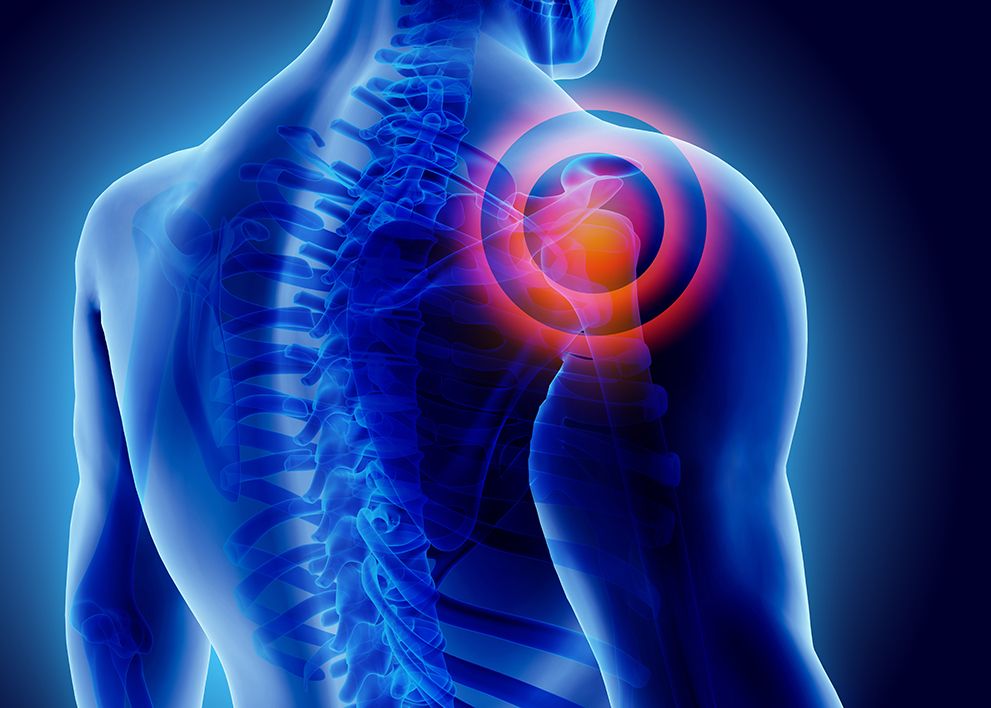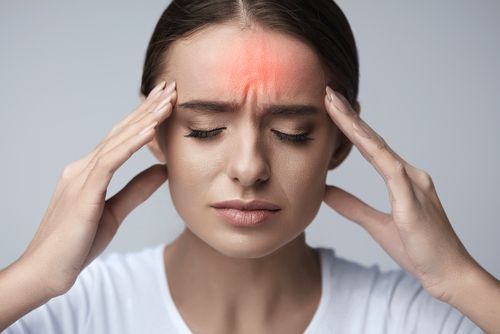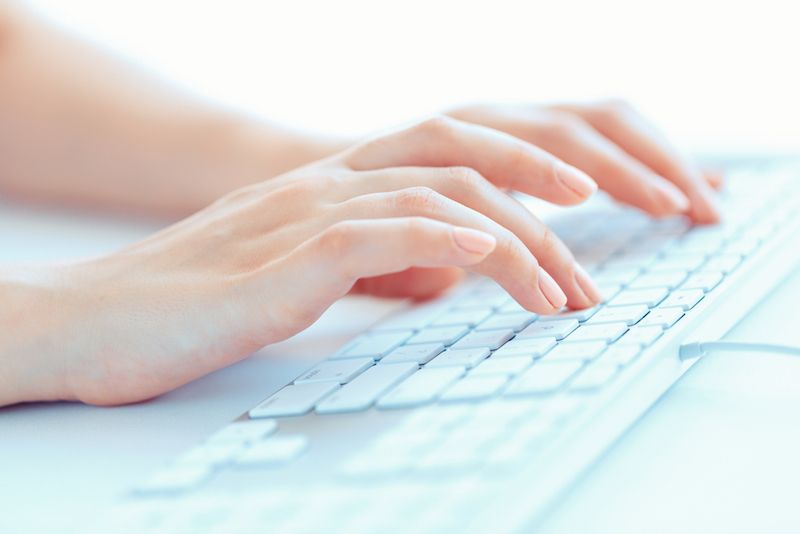
Fibromyalgia diagnoses have been increasing as awareness has risen. Many individuals now feel that they can seek help from the medical field for their issues, although treatments are generally more difficult to understand. Many people who have fibromyalgia also complain about the lack of effectiveness that many treatment options offer. However, chiropractic care has become an increasingly common and successful treatment option for patients with the disease.
Understanding Fibromyalgia
Fibromyalgia is a disorder that is characterized by a laundry list of signs and symptoms. These symptoms include:
Widespread musculoskeletal pain
Weakness
Fatigue
Sleep loss
Memory issues
Mood changes
While the cause is still being investigated, researchers believe that the disorder amplifies pain signals that are sent to the brain. This means that the normal pain sensation of a pinprick to the finger can instead feel like a searing stab wound.
While fibromyalgia is most commonly diagnosed in women, individuals that suffer from headaches, TMJ (temporomandibular joint disorder), anxiety, depression, or irritable bowel syndrome are more likely to be diagnosed with fibromyalgia. The disease is also commonly linked to another traumatic injury or surgery. Symptoms may appear instantaneously or gradually increase in severity.
As fibromyalgia research continues, we can expect to see more definitive answers to our questions. Currently, researchers believe that the disorder may be caused by genetics, past infections, physical trauma, or a combination of the three.

As people age, it is a common often belief that the pain and discomfort associated with our joints is a normal occurrence that we are forced to live with. While our joints can experience levels of degradation as we age, the pain and reduced mobility that is often associated with arthritis don’t have to be something that we suffer through. Instead, let's review some of the facts about chiropractic care and how it can be beneficial in treating the pain associated with arthritis.
Chiropractic Care and Your Joints
Many people believe that chiropractors don't do any work beyond that focused on the spine. And while It is true that the majority of work that chiropractors do surrounds issues associated with the spine, if you think this is the only work that chiropractors do, you are likely to miss a lot of the additional benefits of chiropractic care.
In addition to spinal work, chiropractors also specialize in issues that surround our joints. Since the vertebrae that make up our spinal column contain joints between each individual vertebrae, it becomes more apparent how chiropractors are able to help with your arthritis when you think of them as joint specialists.
The Effects of Arthritis
Arthritis typically occurs when something irritates the joints, which can be a deterioration of the joint itself. As joints deteriorate, they may become irritated more frequently by multiple factors such as increased movement, regular movement, or changes in temperature which can cause inflammation and pain.
This chronic pain and inflammation are what we refer to as arthritis. Many patients take prescription or over-the-counter medications to manage the effects of arthritis, but medications will only treat the symptoms and don’t get to the root cause of your discomfort.

Lower back pain is an exceptionally common complaint and it is estimated that 80% of Americans will suffer from it at some point during their lifetime. Lower back pain is also a leading cause of absence from work due to ill health, even though more than half of all cases are believed to be a direct result of the patient doing a job that involves continual sitting.
In many cases, the back pain is either not severe enough for the patient to seek professional intervention or it resolves itself within a few days. However, there is a percentage of individuals who suffer from chronic, recurrent back pain and are reliant on pain medication to help keep them comfortable day today.
Fortunately, there is no longer any need to suffer from ongoing lower back pain. Chiropractic care from a trained and experienced professional can help relieve your discomfort and enable you to work, sleep and enjoy life without worrying about back pain.
What causes lower back pain?
The lower back, also known as the lumbar, works with the bones of the pelvis to help support the weight of our body as well as to stabilize, rotate, flex and bend the spinal column.
Lower back pain has been attributed to many different things, but experts tend to agree that a sedentary lifestyle, combined with the growing obesity problem, has definitely contributed to the increasing number of people experiencing lower back pain. Posture is also a significant cause of lower back pain. Sitting at laptops and computers for hours on end as well as sitting too long while driving and when watching television are all associated with this type of discomfort.
Occasionally, back pain can be attributed to a medical condition such as sciatica, irritation of the nerve that runs from the pelvis to the feet, or a slipped/herniated disc. Nevertheless, it is often impossible to pinpoint an exact cause of lower back pain and is therefore often referred to as ‘non-specific back pain’ by doctors.

Neck pain is a relatively common ailment, which most of us will experience at least once in our lifetime. In most cases, neck pain will improve and disappear on its own, but if you frequently suffer from this problem, or find that conventional ways of relieving your pain are not working, you may want to consider chiropractic care.
About neck pain
The neck is a very important part of our body, containing the very top of the spine, called the cervical spine as well as many blood vessels and nerves that supply structures including our esophagus, larynx, trachea and thyroid gland. The neck is also home to major blood vessels including the carotid arteries and jugular veins.
When there is tension in the neck, it can have a significant impact on the flow of blood between the head and body, as well as cause compression of the nerves and potentially the spinal cord. When this happens, it can have an effect on other areas of the body, including the upper and lower limbs.
What causes neck pain?
In many instances, the exact cause of neck pain may never be known, but some of the most common causes believed to be behind the majority of cases include:
Sleeping in an awkward position
Bad posture
Trapped nerve
An injury, such as from a vehicle collision or fall
The pain you experience may also differ. It may be a constant dull ache or a sharp pain that occurs when you place your head a certain way or perform a specific movement, such as turning your head from side to side.
In many cases, neck pain may be accompanied by other symptoms, including swelling or inflammation in the neck, pain that radiates into the shoulders or upper arms, or headaches.

With more vehicles on the road than ever before, automobile accidents have unfortunately become a common occurrence. Even the most confident and experienced driver can make mistakes that sometimes have catastrophic results. Estimates suggest that there are around 2.35 million auto injuries in the United States every year – more than 6,000 every single day – and while some injuries may be minor, others can have debilitating and sometimes permanent consequences.
Neck and back damage is among the most common type of injury sustained during automobile accidents. This is because the force of the impact overextends and strains the ligaments and muscles in the back, causing injuries including:
Compression fractures
These occur when the upper part of the body is thrown forward while the lower body is restrained by a seat belt. When this happens, the vertebrae can be pulled apart, causing them to fracture. In severe cases, the spinal cord may also become damaged by fractured pieces of bone.
Disc herniation
The intervertebral discs are sponge-like circular pads that sit in-between the vertebrae. They have several functions, including enabling the spine to absorb impacts without becoming damaged. However, if the outer layer of a disc becomes damaged, the soft, inner gel can seep out and irritate the surrounding nerves.
Spondylolisthesis
This condition occurs when a vertebra moves out of place due to force or a fracture in the bone. The displaced bone may then press on the surrounding nerves, causing pain and other neurological symptoms.
Whiplash
Whiplash is most common in rear-end collisions as the impact of the secondary car forces your head to ‘whip’ backward and forwards in quick succession and as a result, the muscles in the neck are overextended.

Regain Mobility and Find Relief with Our Frozen Shoulder Program
Are you dealing with the pain and stiffness of frozen shoulder? Frozen shoulder, or adhesive capsulitis, can make even the simplest movements a challenge. Our specialized Frozen Shoulder Program offers a comprehensive approach to help you reduce pain, restore movement, and regain control over your daily life.
Schedule Your Consultation Today
What is Frozen Shoulder?
Frozen shoulder is a condition characterized by stiffness, pain, and limited range of motion in the shoulder joint. It occurs when the shoulder capsule thickens and tightens, restricting movement. Although the exact cause is often unknown, frozen shoulder frequently affects those recovering from surgery or injury, people with certain health conditions (such as diabetes), and individuals between the ages of 40 and 60.
Understanding the Stages of Frozen Shoulder
Frozen shoulder generally progresses through three stages, each lasting several months to a year:
Freezing Stage: Pain and stiffness gradually increase, making shoulder movement difficult.
Frozen Stage: Pain may lessen, but the shoulder remains stiff, limiting motion severely.
Thawing Stage: Gradual improvement in movement and decreased stiffness as the shoulder “thaws.”
These stages can make frozen shoulder a long-lasting and painful experience, but early intervention can help speed up recovery and reduce discomfort.
Signs and Symptoms of Frozen Shoulder
Recognizing the symptoms early can help you seek treatment sooner. Here are common signs of frozen shoulder:
Pain: A deep, aching pain, often worse at night and with movement.
Stiffness: Difficulty moving the shoulder, especially in certain directions.
Limited Range of Motion: Reduced ability to lift the arm or reach behind your back.
Muscle Weakness: Muscle stiffness and weakness due to restricted use.
If you’re experiencing these symptoms, our Frozen Shoulder Program may be able to provide the relief you need.
Our Approach to Treating Frozen Shoulder
Our Frozen Shoulder Program takes a holistic approach to manage pain, improve flexibility, and restore range of motion in the shoulder. By using a combination of non-invasive therapies, guided exercises, and personalized support, we target the underlying causes of stiffness and pain.
Why Choose Our Frozen Shoulder Program?
Customized Treatment Plans: We design a plan tailored specifically to your stage of frozen shoulder and personal needs.
Non-Surgical Approach: Our program focuses on gentle, effective therapies that avoid the need for surgery.
Gradual, Lasting Results: We aim for sustainable recovery, helping you regain mobility and prevent future issues.
Supportive Team: Our experienced staff guides you through each phase of recovery, ensuring you stay on track and feel supported.
Patient Success Stories – Real Relief, Real Results
"I got no pain. I am very happy. I am really, really pleased with how it turned out." – HT
"Daily work is a lot less pain" – KM
"Great results. I would recommend it to anybody." – TP
Frequently Asked Questions
Is frozen shoulder curable without surgery?
Yes, many cases of frozen shoulder can be effectively managed and improved without surgery. Our program is designed to restore movement and reduce pain through non-invasive methods.
How long does it take to see results?
While every case is unique, most patients begin to see improvement within a few weeks of starting the program, with significant progress over the course of the program.
Can I continue with my daily activities during the program?
Yes, our program includes gentle exercises and therapies that allow you to continue with your daily life while gradually improving shoulder function.
Don’t Let Frozen Shoulder Limit You – Start Your Recovery Today
If you’re ready to regain control over your shoulder movement, our Frozen Shoulder Program can help. Contact us to schedule a consultation and find out how our specialized program can provide the relief you’re looking for.
If Frozen Shoulder is affecting your daily life, our Shoulder Program may provide the relief you need. For more information, please visit our Shoulder Program page or contact us at (320) 585-7246.

A headache is a very generalized term given to pain that is felt in the head or sometimes the neck. There are many different types of pain associated with headaches ranging from acute localized discomfort to a more generalized ache. Some headaches may appear suddenly and only last for a short period of time while others may build gradually and last for several hours.
Types of headaches
While experts have identified more than 150 different types of headaches, some are more common than others. These include:
Tension headaches
By far the most common type of headache is a tension headache, which is usually attributed to stress. They tend to come and go and cause mild to moderate pain with no other symptoms.
Migraines
Migraines are often considered to be more painful than a tension headache. They last longer ranging anywhere from a few hours to a few days and are usually accompanied by other symptoms such as sensitivity to light, smells, or sound, nausea and vomiting, blurred vision, and loss of appetite. Some people suffer from recurrent migraines and may experience multiple episodes in a short period of time.
Cluster headaches
Cluster headaches tend to occur in groups and even though no one is sure why are more common in men than women. The pain associated with a cluster headache tends to be a burning or piercing sensation that is localized behind or around one eye. It can also be so severe that the patient can’t function properly until the pain eases.
Sinus headaches
Sinus headaches tend to occur when one has a cold or sinus infection. With a sinus headache, the pain is felt in your cheekbones, forehead, or bridge of your nose where the sinuses are located since it is caused by the swelling of your sinuses. The pain usually decreases after taking anti-inflammatory pain medication.
There is a range of things that you can do to help with one-off headaches, such as taking pain medications, drinking plenty of water, and trying to relax somewhere calm and quiet. However, if you suffer from recurrent headaches, you may want to consider seeking chiropractic care, which has been shown to be very successful in providing relief and even helping prevent this type of pain.

Traumatic brain injury (TBI) is a brain injury resulting from a sudden blow or impact on your head, causing damage to your brain. The damage can be mild or severe. It can significantly impact your physical, cognitive, and emotional health.
Causes of TBI
TBI causes range from falls to sports-related injuries, car accidents, and violent assaults. The main causes of TBI are motor vehicle accidents and falls. Children, elderly adults, and military personnel can suffer from TBI.
Symptoms of TBI
TBI symptoms can include the following:
Headaches
Loss of consciousness
Loss of balance
Dizziness
Convulsions or seizures
Nausea or vomiting
Sensory changes, such as ringing in the ears or blurred vision
Fatigue or drowsiness
Disorientation or confusion
Mood changes
Disorientation or confusion
Diagnosing TBI
Diagnosing TBI can be challenging as its symptoms may not appear immediately after the injury. The diagnosis may involve a physical examination and a neurological evaluation. It also entails imaging tests, such as a CT scan or MRI. A thorough examination evaluation is necessary to determine the severity of the injury. It assists in developing an appropriate treatment plan.

Many people live with consistent and regular foot pain. While others may have pain that occurs only when they are engaged in certain activities. While orthotics may not be the right answer for everyone to help with this pain, it’s a good idea to consult with a professional to decide if orthotics are a good option for you.
For many, it is tempting to try to self-diagnose and purchase shoe inserts without consulting with a medical professional first, but the results are often minimal or ineffective. However, this doesn’t mean that you should be unprepared for your visit which is why we’ve compiled some helpful information to get you up to speed on the world of orthotics.
Inserts
Shoe inserts are available over the counter in many pharmacies and shoe stores and provide an additional cushion when they are placed inside of a shoe. Shoe inserts are constructed from a variety of materials including gel, plastic, or foam. These inserts offer additional support for arches, heels, toes, or the entire foot, but if the inserts are not made specifically for your foot or foot pain, they will not actually help correct any problems that are causing your specific pain.
Orthotics
Many consumers feel that orthotics and inserts are synonymous. However, there are several distinct differences between the two. Orthotics are prescription medical devices that are specifically designed and tailored to meet your personal needs and can help with your foot position when you stand, walk or run. Orthotics are also prescribed to help with other medical conditions such as arthritis, diabetes, plantar fasciitis or bursitis and can be prescribed to eliminate the need for surgery to correct flat feet.

As the professional community ages, the diagnoses of carpal tunnel syndrome continue to rise. Carpal tunnel syndrome is commonly associated with the repetitive movement related to typing on a keyboard with improper hand positioning. Carpal tunnel syndrome creates a burning, numbness, or tingling sensation in the hands or wrists and can occur on one or both sides.
Carpal tunnel release and surgeries associated with relieving the pain associated with carpal tunnel are increasing every year. Unfortunately, the success of these surgeries is only seen in about half of the population. If you have been diagnosed with carpal tunnel syndrome and are currently considering your options for pain relief, one you should definitely consider is chiropractic care.
What is Carpal Tunnel Syndrome?
The carpal tunnel is a narrow passageway in your wrist where the median nerve passes through and then into your hand. Any inflammation or swelling of the carpal tunnel can constrict or cause pressure to occur on the median nerve. This interruption of your nerve's ability to function can cause the suite of problems associated with carpal tunnel syndrome.
Women are three times more likely to develop carpal tunnel syndrome and while scientists are not certain why this occurs, they suggest that it may be due to the smaller size of the carpal tunnel in women when compared to their male counterparts.
Diagnosing Carpal Tunnel Syndrome
The diagnosis of carpal tunnel syndrome can be notoriously difficult. Any issues with the median nerve anywhere in the body can cause similar problems, making it difficult for an initial diagnosis. Some of the other possibilities that your chiropractor will try to rule out are arthritis, subluxations, or herniated discs in the spinal column that may interfere with the medial nerve before it reaches the carpal tunnel.
Conducting Invasive Treatments
While your doctor may suggest surgery as a possibility, it is essential to recognize that there are many possible misdiagnoses and complications associated with this procedure. The high number of ineffective operations suggests that there may have been a misdiagnosis in the first place.
Additionally, surgeries require significant preparation, cost, and recovery time. So before you schedule an invasive procedure, it would be wise to meet with your chiropractor and get their opinion first.






